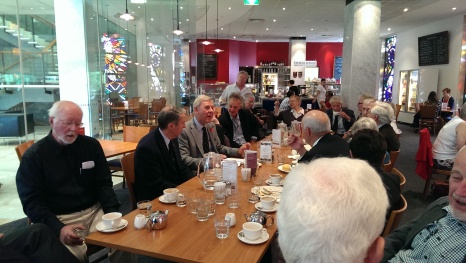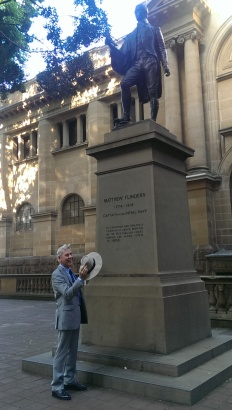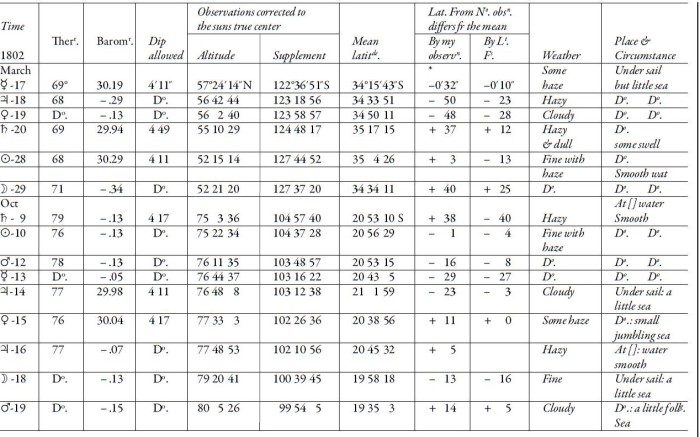The Hakluyt Society recently published the annotated edition of Matthew Flinders’s journal of the first circumnavigation of Australia (1801-1803), which has been distributed to Hakluyt Society members free of charge in August 2015. Professor Kenneth Morgan, the editor of Australia Circumnavigated: The Voyage of Matthew Flinders in HMS Investigator, 1801-1803, recently published a blog on this page about the life of Captain Matthew Flinders. In this follow-up post, Prof Morgan provides fascinating details about the construction, uses, and eventual unseaworthiness of the ship on which Flinders carried out his expedition: the HMS Investigator.
– Join the Hakluyt Society on www.hakluyt.com –
HMS Investigator, the ship supplied to Flinders for his Australian circumnavigation, was built in 1795 by Henry Rudd as a collier at Monkwearmouth, near Sunderland (county Durham). Originally named the Fram, this vessel of 334 tons was 100 feet long, about 29 feet on the beam, with a draught of around 14 feet and 19 feet depth of hold. She was a three-masted, square-sterned ship built to ply the route from the north-eastern coalfields around East Anglia to London. The Navy Board purchased the ship at Deptford in April 1798 and renamed her the Xenophon. The vessel was then converted to an armed sloop. This mainly involved building a gun deck beneath her main deck and cutting large gun ports in her sides. The gun ports held twenty 32 pounder and two 18 pounder carronades. Over the next two years the Xenophon was deployed with the Channel Fleet on convoy escort duties in and out of the Nore. In late November 1800 the ship arrived at Sheerness with instructions for her defects to be repaired.
Sir Joseph Banks drew up a shortlist of possible new names for the Xenophon for the Australian circumnavigation. The Admiralty selected one of his suggestions, the Investigator, and ordered the Navy Board to prepare this vessel for an expedition to the southern hemisphere. Deploying a converted collier for a voyage of discovery had famous precedents in the ships used by James Cook for his voyages of Pacific exploration. To prepare the vessel for a long ocean voyage, copper sheathing took place, as was then becoming common in the navy, to protect the hull from destruction by the teredo navalis. As it was anticipated the load taken by the Investigator would weigh down the vessel in the water, an additional two planks were sheathed to cope with the weight of the extra stores. Flinders requested this should be done after taking advice from Isaac Coffin, the resident naval commissioner at Sheerness. Coffin oversaw the fitting out of the Investigator, dealing with her masts, spars, stores and guns.
Whether the ship’s timbers were properly caulked and checked for a long voyage is unknown, as there is little correspondence between the Sheerness dockyard and the Navy Board about the ship. The repairs were undertaken swiftly, but it is possible that not all of the iron bolts and fittings were replaced with copper ones and that the vessel may have been coppered over rotten timbers. After repairs were completed, the Investigator was described in Admiralty records as ‘fitting out for a voyage to remote parts’. The Investigator carried a launch, two cutters, a gig and a whaleboat for exploration of inlets, rivers and creeks along the shoreline of Terra Australis. Flinders had reservations about the suitability of the Investigator for a long, ambitious oceanic voyage. The leakiness of the Investigator was to prove a serious problem during Flinders’s expedition, and his circumnavigation of Australia ended in mid-1803 owing to the unseaworthiness of the Investigator.
Professor Kenneth Morgan (Brunel University, London) is an economic and social historian of the British Atlantic world in the ‘long’ eighteenth century (1688-1840). His research focuses on the history of merchants, ships, foreign trade and ports, as well as on Australian history, slavery and the slave trade. A Fellow of the Royal Historical Society, Professor Morgan has published extensively on the Atlantic slave trade and maritime exploration. He is the editor of Australia Circumnavigated: The Voyage of Matthew Flinders in HMS Investigator, 1801-1803 (Works issued by the Hakluyt Society, Third Series, 28-29. London: 2015).

@HakluytSociety – Become a member at www.hakluyt.com




